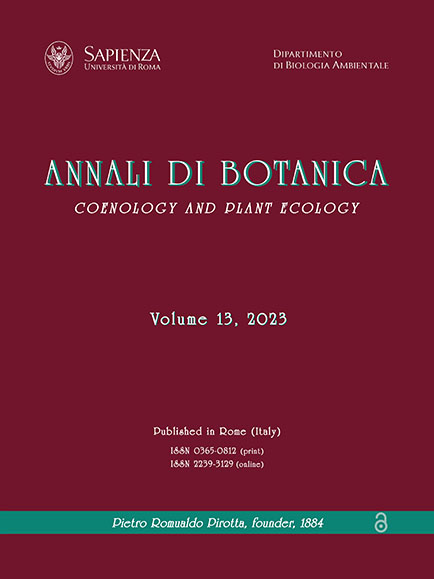Postharvest longevity and physiological changes in cut Asparagus plumosus foliage as influenced by preharvest and postharvest treatment of salicylic acid and gibberellic acid
DOI:
https://doi.org/10.13133/2239-3129/18018Keywords:
antioxidant enzymes, foliar application, growth regulators, malondialdehydeAbstract
Asparagus plumosus have plenty of applications in floral decoration, but its postharvest longevity is short. So, the present research aimed to improve vase life and some physiological parameters of this plant species in a factorial experiment based on a randomized complete block design with 16 treatments and three replications. The experimental treatments included two plant growth regulators of gibberellic acid (GA3) and salicylic acid (SA) at four rates (0, 100, 200, and 400 µmol) and two application methods of foliar application at the preharvest phase and application in the preservative solution at the postharvest phase. In both application methods, SA and GA3 improved all traits versus the control irrespective of the application method. However, the combined application of 100 and 200 µmol of GA3 and SA exhibited the best results and the longest vase life. The weakest results among different rates were obtained from increasing the application rate of SA and GA3 to 400 µmol. In general, the best treatments for improving the vase life and related traits were SA100 + GA200 in the foliar application and SA200 + GA100 in the vase solution application. So, they are recommended for preserving the postharvest quality of this plant species.

Downloads
Published
How to Cite
Issue
Section
License
Copyright (c) 2023 Mitra Amin, Roohangiz Naderi, Shahram Sedaghathoor, Sepideh Kalatehjari

This work is licensed under a Creative Commons Attribution-NonCommercial-ShareAlike 4.0 International License.
The copyright for articles in this journal are retained by the author(s), with first publication rights granted to the journal, articles are free to use with proper attribution in educational and other non-commercial setting.
